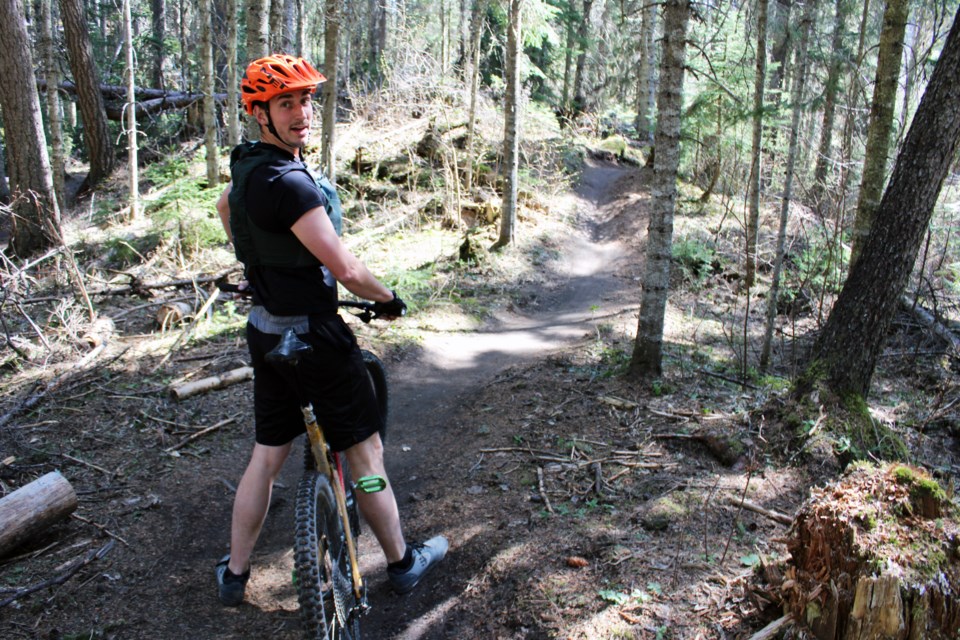Lawrence Hewitt lives on a heavily forested property on the northern outskirts of the city and like many Prince George residents he’s worried about wildfires.
Those are real fears after an unprecedented 2.8 million hectares of B.C. forest burned in 2023 and the lingering hangover of extreme drought conditions that have persisted this spring through much of the northern half of the province.
Hewitt caught wind of the new FireSmart BC fire mitigation program the provincial government has introduced to encourage people to take charge of making their own homes less likely to burn and he’s been busy doing exactly that.
“I’m worried about it because I live in a bushy area and I’m dealing with it and thank God it’s been raining,” said the 70-year-old Hewitt.
“I had three people from the regional district come by last week and give me advice. There’s a protocol for distances from a residence so the first two metres has to be barren ground, like a concrete patio of gravel, no combustible material.”
Hewitt was also told to cut off the lower limbs of trees within 10 metres of his house to lessen the chance of a fire creeping close to the ground and to remove the smaller trees within a 30 m radius.
The program advises removing leaves and conifer needles from roof gutters and planting types of shrubs and plants that are less likely to burn.
Hewitt’s five-acre property is surrounded by his neighbour’s 350-acre parcel and another 40-acre property across the street. The forests that make up the area are a mixture of poplar, birch and conifers and he’s hoping his preventative measures will keep his homestead untouched by fire.
“You can’t weed the province, but you’ve got to take care of what you can,” said Hewitt. “A lot of what was logged off around Prince George (before and just after the Second World War) has grown back very randomly and two feet apart, skinny dead-branched trees that are so close to each other fire could really take off easily once it gets going.
“Hopefully it’s not going to happen but if it does you’ve got to do something to be ready for it.”
Hewitt used to go for walks with his friends in the city and likes the trails at Pidherny Recreation Site. But what he observes in the surrounding forest of the 620-hectare former woodlot scares him.
He sees too many dead or dying trees growing inches apart and branches on or close to the ground stacked on top of each other teepee style, just waiting for a source of ignition that could spark a potential disaster on the steep Pidherny slopes.
“It’s pickup sticks, there’s trees down everywhere, that whole hill, and if something catches at the bottom of the hill, it’s a nightmare,” said Hewitt.
“I can’t imagine a worse situation, all that dead wood ready to go and sweep up the hill. It’s quite mindboggling when you see it. It’s got to be cleared out.”
Hewitt knows there will be costs incurred by thinning the forest to reduce the fire hazard and the risk of a crowning fire that moves from treetop to treetop but it’s worth it if it leaves the city less likely to burn like Fort McMurray did in May 2016.
The Ministry of Forests conducted a thinning project on the lower trails of Pidherny in 2022-23, which opened up trail sightlines and cleared some of the dead or decaying wood, with plans to tackle the upper half of Pidherny within the next two years.
Hewitt is hoping the money will be there to complete the project.
He said a fire at Pidherny could easily jump Foothills Boulevard and threaten houses in the Hart Highlands.
“You’ve got to do something to be ready for it, so just clean up,” said Hewitt. “Yeah, they have to check their priorities, and so clearing out a greenbelt in College Heights is probably more of priority because it’s surrounded by housing and fences.
“It’s unfortunate but a lot of it has to be done,” he said. “It’s a point that needs to be raised.”



